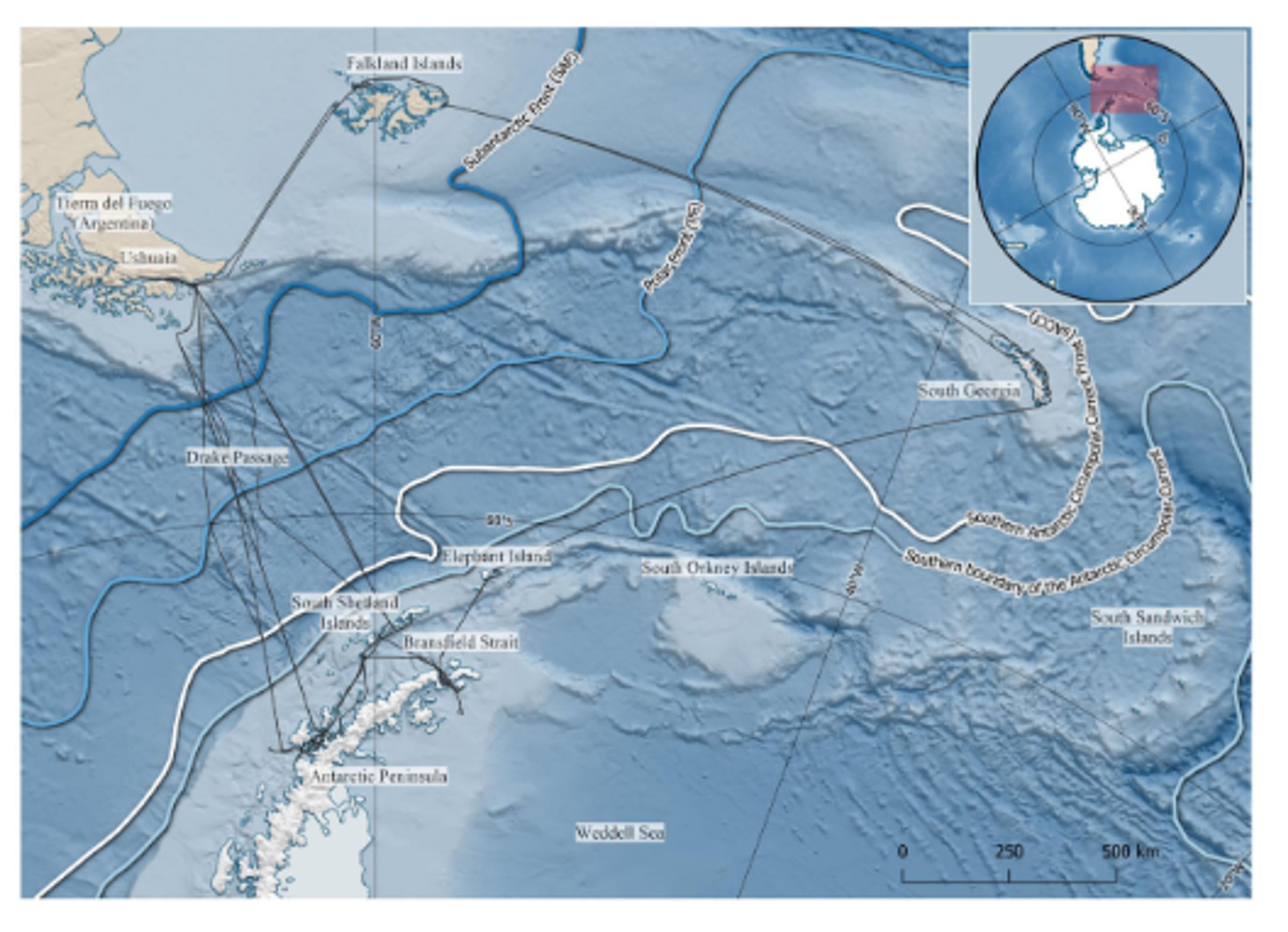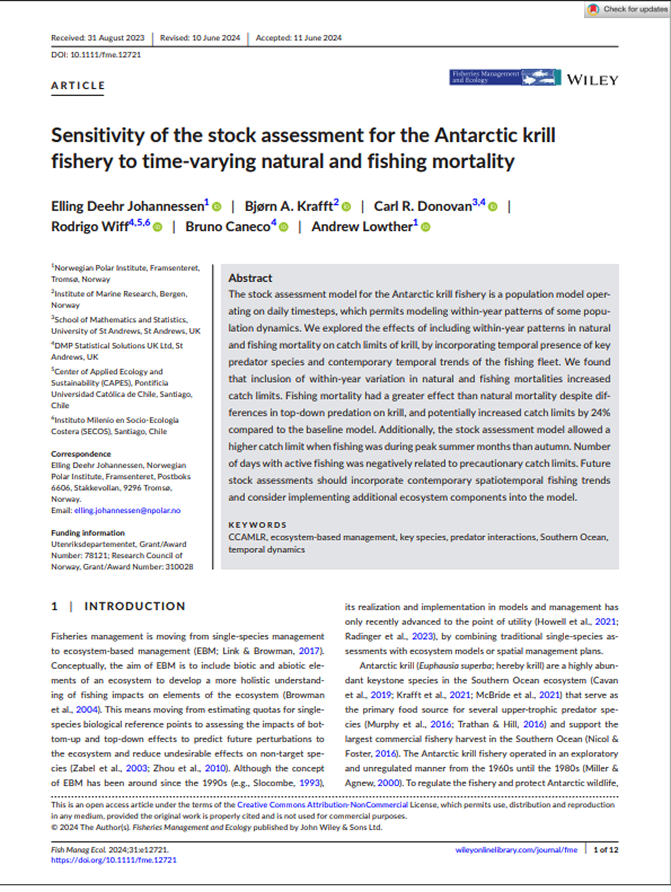Biomass
Antarctic ecosystem
Climate
Krill (Euphausia superba)
Large-scale seabird community structure along oceanographic gradients in the Scotia Sea and northern Antarctic Peninsula
Summary
This study used cruise ships as observation platforms to survey seabird communities across the Scotia Sea and Antarctic Peninsula during 2019-2020. The research analyzed species composition, population density, and species diversity in relation to environmental factors using 636 standardized survey strips covering 690 square kilometers. Twenty-eight different taxonomic groups were observed during the surveys.Ocean surface temperature and distance from shore were the most important factors determining seabird distribution, with communities showing geographic separation rather than concentrated hotspots.The research demonstrates that large-scale oceanographic features structure seabird communities through their influence on prey distribution and availability. The study also establishes that cruise vessels can serve as cost-effective platforms for ecosystem monitoring when combined with dedicated research surveys.

1
Map of the study area showing average positions of major ocean current boundaries and cruise ship survey routes marked as black lines. Map created using Quantarctica mapping software (Matsuoka et al., 2021) and associated datasets (Orsi et al., 1995; Amante & Eakins, 2009; NOAA National Geophysical Data Center, 2009; Arndt et al., 2013; Liu et al., 2015, SCAR Antarctic Digital Database) in QGIS mapping software (QGIS.org, 2019).Key Findings
1
Ocean surface temperature and distance from shore explained 13.8% of the variation in seabird community composition. 2
Species diversity peaked at 3°C ocean surface temperature and decreased with greater distance from the coast. 3
Geographic separation of communities was clear: Antarctic Peninsula areas had ice-associated species, Falkland Islands had temperate species, with varying open ocean communities between regions. 4
Cruise vessels provided a cost-effective monitoring platform for observing large-scale distribution patterns. 5
Seabird communities were structured by ocean water characteristics and food availability patterns.

